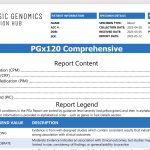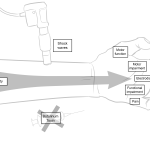Your immune system is supposed to be your personal bodyguard. A highly trained, elite security detail that identifies threats—like viruses and bacteria—and neutralizes them. But what happens when that security team gets confused? When it starts seeing your own organs, your joints, your skin as the enemy? That, in a nutshell, is an autoimmune disorder.
It’s a relentless internal civil war. And for the millions living with conditions like rheumatoid arthritis, Hashimoto’s, lupus, or celiac disease, the conventional approach often feels like just throwing more soldiers into the fray, with heavy side effects. But what if there was another way? A smarter strategy that doesn’t just suppress the symptoms but tries to understand why the body turned on itself in the first place?
That’s the promise of integrative medicine. Let’s dive in.
What Exactly is an Integrative Approach, Anyway?
Think of it this way: if conventional medicine is a brilliant mechanic focused on fixing a single broken part, integrative medicine is the master electrician and plumber all in one, looking at the entire house’s wiring, foundation, and environment to find out why the fuse blew. It’s a whole-person philosophy.
It’s not about rejecting conventional tools—far from it. Medications like immunosuppressants can be literal lifesavers, providing critical relief. The integrative model says, “Great, let’s use that. And let’s also look at your diet, your stress levels, your sleep, and your toxic exposures to see if we can calm the underlying fire so you might need less of that medication over time.” It’s both/and, not either/or.
The Core Pillars of an Integrative Autoimmune Protocol
1. The Food-as-Medicine Revolution
You can’t fight a battle with the wrong fuel. For many, food is the single biggest trigger. The goal isn’t a temporary “diet” but a sustainable nutritional strategy to reduce inflammation and heal the gut.
- The Anti-Inflammatory Plate: This means loading up on colorful vegetables, omega-3 rich fish (like wild-caught salmon), and healthy fats (avocado, olive oil).
- Identifying Personal Triggers: Common culprits include gluten, dairy, refined sugars, and industrial seed oils. An elimination diet, like the Autoimmune Protocol (AIP), can be a powerful detective tool to identify your unique food sensitivities.
- Gut Health is Non-Negotiable: Leaky gut (intestinal permeability) is a huge player in autoimmunity. Healing the gut lining with bone broth, fermented foods (like sauerkraut and kimchi), and targeted probiotics can be a game-changer.
2. Taming the Stress Dragon
Here’s the deal: stress isn’t just in your head. It directly impacts your immune system through the HPA axis (your body’s central stress response system). Chronic stress pumps out cortisol, which can dysregulate immune function and fan the flames of inflammation.
Integrative approaches take this seriously. We’re talking about building daily, non-negotiable practices into your life:
- Mindfulness Meditation (even 10 minutes a day)
- Yoga or Tai Chi
- Walking in nature (“forest bathing”)
- Prioritizing sleep hygiene—because poor sleep is a massive stressor on the body.
3. Smart Supplementation
Sure, it’s a supplement, not a substitute. But when you’re fighting a nutrient-depleting condition, filling in the gaps is crucial. Key players often include:
| Supplement | Potential Role |
| Vitamin D | Critical immune system modulator; deficiency is strongly linked to autoimmune risk. |
| Omega-3 Fatty Acids | Powerful anti-inflammatory agents to help cool systemic inflammation. |
| Probiotics | To reseed the gut with beneficial bacteria and support a healthy microbiome. |
| Curcumin (from Turmeric) | A potent natural anti-inflammatory that rivals some OTC drugs in studies. |
Important: Always work with a knowledgeable practitioner. Supplements can interact with medications.
4. Movement as Medicine
When you’re in pain and exhausted, the couch calls. But gentle movement is paradoxically energizing. It reduces inflammation, improves circulation, and supports mood. The key is listening to your body—a restorative yoga class on a bad day, a gentle swim on a better one. It’s about motion, not exertion.
Putting It All Together: This Isn’t a Linear Path
Honestly, the hardest part can be the start. It feels overwhelming. Do I change my diet and meditate and take supplements and exercise? The answer is: not all at once.
The most successful approach is a slow, layered one. Maybe you start by cutting out processed sugar for two weeks. See how you feel. Then, you add a daily 15-minute walk. Then, you focus on getting to bed 30 minutes earlier. Small, consistent wins build momentum. This is a marathon, not a sprint. And there will be flares—that’s okay. It’s data, not failure.
The Heart of the Matter: You Are the Expert
The most profound shift in integrative health is the transfer of power. You move from being a passive patient to an active investigator of your own health. You learn to connect the dots. You notice that a stressful week at work preceded a flare-up. You realize that eating bread makes your joints ache.
This approach asks a deeper question: not just “What drug treats this disease?” but “What does this body need to find its way back to balance?” It’s a collaboration between you and your healthcare team, a personalized map drawn with the clues your own body provides. It’s about building a life where autoimmunity is a part of your story, but it doesn’t get to write the whole book.











